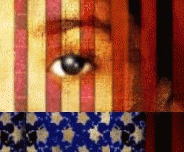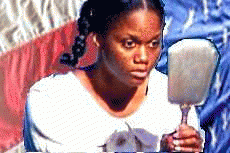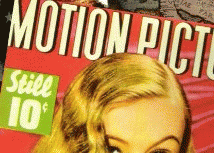Monster By Walter Dean Myers
Annotation:
Jurors must determine if Steve Harmon is a monstrous menace to society or an innocent victim of it. He’s young, Black and on trial. What else do they need to know?
Recommendation:
HAMLET: Denmark's a prison.
ROSENCRANTZ: Then is the world one.
HAMLET: A goodly one; in which there are many confines, wards and dungeons.
-- Shakespeare's Hamlet, Act II, scene ii
Part screenplay, part diary, part philosophical fable -- Walter Dean Myers has crafted a truly novel courtroom drama in the creation of his Monster.
The story of Steve Harmon's murder trial is told from the 16-year-old African American photographer’s own shattered perspective: "Sometimes I feel like I have walked into the middle of a movie." In contrast to the dark danger and crowded confines of his situation, the spacious landscapes of language in Harmon's multimedia meta-narrative create a broad-ranging, bright, and often illuminating look at life without the possibility.
Despite advice from his high school film club coach -- Mr. Sawicki -- to "keep it simple," Monster ends up being a profoundly complex work.
The disjointed dialogue fragments and quick-cuts through time and place offer almost no clues about the person calling the shots. It hardly matters. We're satisfied to busily piece together the moving parts of this murder mystery, since we are aware that the protagonist could be any one of the thousands of powerless young Black men written off by the American justice system every year.
But at some point, the fill-in-the-blank, film format shifts the focus back to us -- the viewers. The jury. We're forced to rewind and re-think some of our assumptions about what we are reading -- and what we think we know about the writer.
That monster, custom, who all sense doth eat,
Of habits devil, is angel yet in this.
-- Shakespeare's Hamlet, Act III, scene iv
This monster turns out to be more like a modern-day Hamlet of Harlem. He has us contemplating identity, culpability, moral ambiguity, objective vs. subjective truth and the relationship between perception and reality. His ingeniously conceived movie manuscript/suicide note forces us to respond, reflect, evaluate, and face the dilemma of truth or consequences.
To become, or not to become. That is the question.
Like all good literature, Monster transports us to new places and provokes new understandings. One of the most effective scenes on the way to Steve Harmon's final verdict on himself -- is the testimony of Mr. Sawicki. Speaking to the court, and through his student, Sawicki advises that "to make an honest film one has to be an honest person."
Steve Harmon has honestly compiled his collection of sounds and images, thoughts and feelings. He has told his truth, his whole truth, and nothing but his truth. You decide the facts. The work itself rings true and is finally the only evidence we should need of Steve Harmon's humanity, his depth of character, and his innocence.
Walter Dean Myers' Monster manages to provide a new perspective on what a novel can be -- and do.
While the book's cinematic format, deadly serious subject matter, and poetic power give it wide appeal, this work is likely to be particularly engaging for young adults of color. One of the central issues Steve Harmon grapples with is the idea that the color of his skin automatically assigns him a level of guilt. This, of course, aligns the book with the central tenet of the American jury system -- the presumption of innocence -- something even Steve Harmon has to learn to give Steve Harmon.
Nomination: Yes
Genre Classification: Printz Winner, Realistic/Edgy, Multicultural
Video Book Trailer!
Walter Dean Myers biography
http://www.walterdeanmyers.net/bio.html

Words of a Feather
Invisible Man
by Ralph Ellison
The Autobiography of an Ex-Colored Man
by James Weldon Johnson















 12:01 AM
12:01 AM
 Vance Holmes
Vance Holmes











































